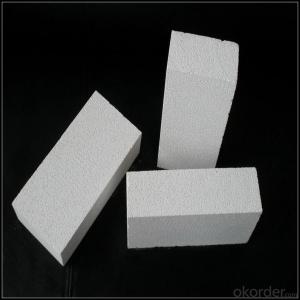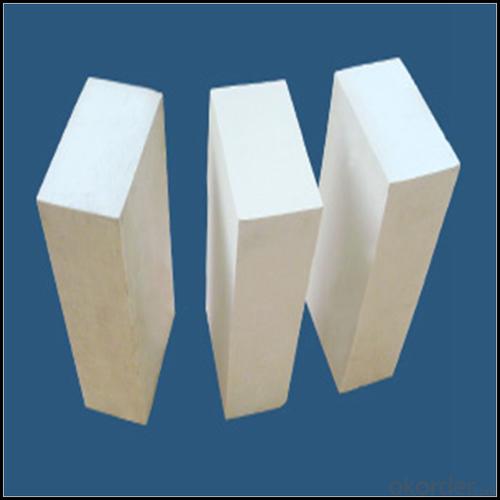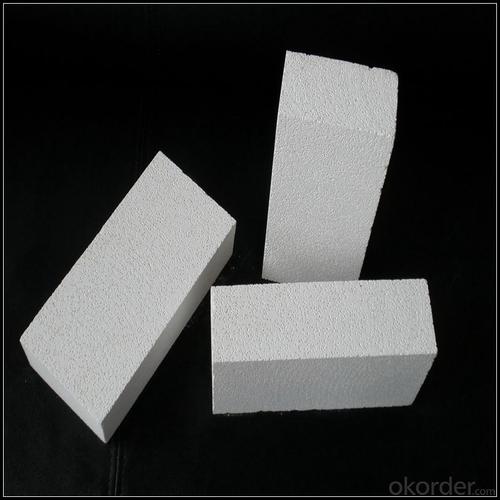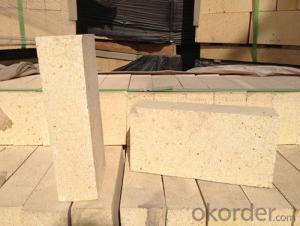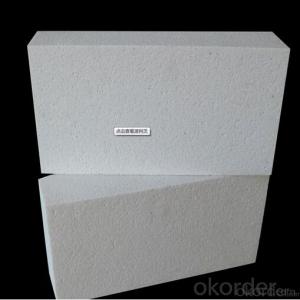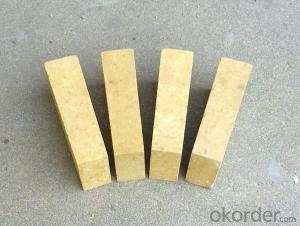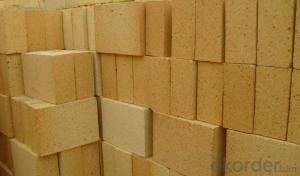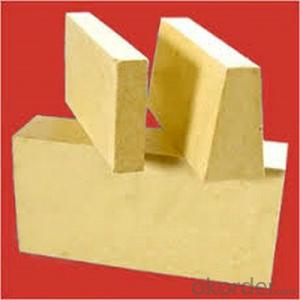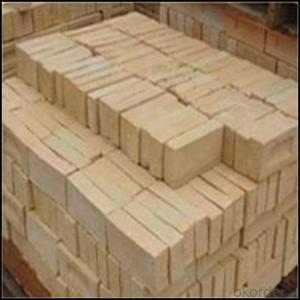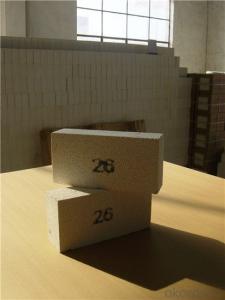Insulating Fire Brick SK34 High Alumina Refractory Brick for Furnace Liner
- Loading Port:
- China main port
- Payment Terms:
- TT OR LC
- Min Order Qty:
- 0.01
- Supply Capability:
- 2000 m.t/month
OKorder Service Pledge
OKorder Financial Service
You Might Also Like
Refractory Brick
CMAX firebricks are classified under temperature between 1300℃ to 1700℃, manufactured from high purity alumina clay by mixing, press-forming, drying, sintering and machining. Bricks contain carefully-graded organic fillers which are burned out during sintering to give a uniform controllable pore structure. This technique makes product feature low thermal conductivity and excellent heat insulation
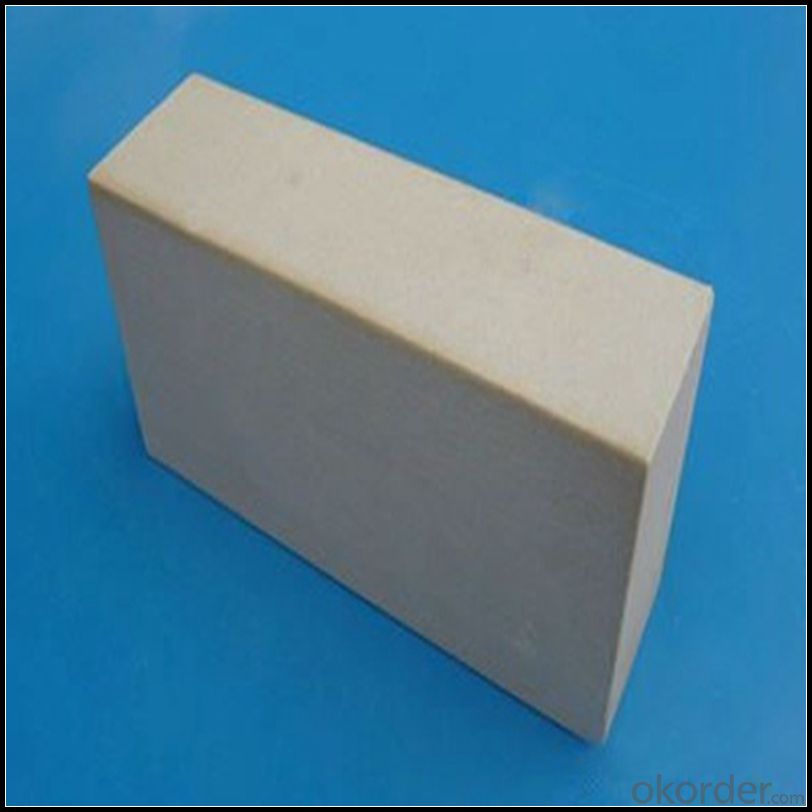
Features
1.low creep deformation
2.huge heat capacity
3.great refractoriness
4.thermal shock resistance
Application
1.Carbon bake furnaces in the aluminum industry
2.Preheat zones and cyclones of rotary cement kilns
3.insulation for glass tanks
4.Coke ovens
5.Blast furnaces
6.Reheating furnaces
7.Suspended roofs
8.Lime kilns
9.Chimney
10.BBQ/Pizza Ovens
Data Sheet
Classification Temperature (℉/℃) | 3000/1650 |
Bulk Density (g/cm3 ) | ≤1.0 |
Thermal Conductivity | |
800℃, W/m.K | ≤0.39 |
1000℃, W/m.K | ≤0.43 |
1200℃, W/m.K | ≤0.48 |
Reheating Linear Change (%) | 1550℃×12h |
≤0.9 | |
Chemical Composition (%) | |
Al2O3 | ≥75 |
Fe2O3 | ≤0.5 |
Packaging & Shipping
Packaging Details:Be packed in fumigated wooden pallets
Delivery Detail: 30 days after order

Our Services
Optimum solution and product supply of refractories for high temperature industries, such as iron steel, non-ferrous, petrochemical and building materials.
Engineering design, contract and consult for refractories, and civil architecture design.
Research, development, manufacture and sale of superhard materials.
R&D, manufacture and sale of special packing materials for export.
Inspection, supervision and arbitration of refractories.
Consultation and services in refractories information.
Training and cultivation of high-level talents in refractories profession
Sales Network

Company Information
CNBM (China National Building Material) Group is the largest comprehensive building materials group in China that in integrate scientific research, manufacturing and logistics into one entity. The largest building materials and equipment specialists in China. Upon State Council approval, today CNBM owned more than 300 subordinate manufacturing factories and servicing companies. There are 6 fully owned public listed companies and 11 partially owned with substantial shares public listed companies. In many of these fields, CNBM is playing the leading role in the building industry in the country.
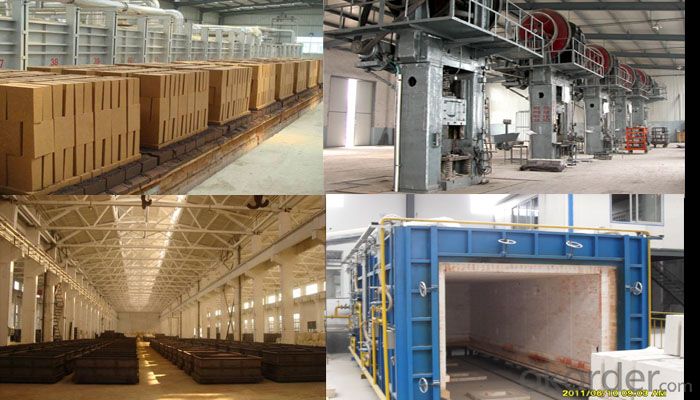
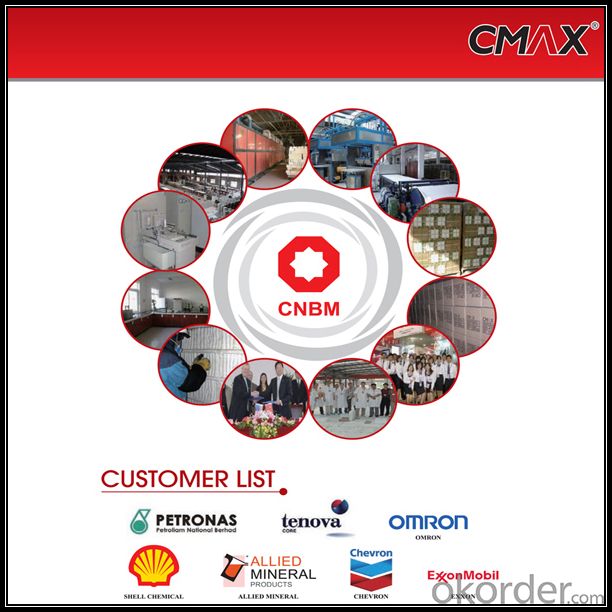
FAQ
1. Which products do you have?
We have all kinds of refractory brick, castable, mortar, cement, ceramic fiber products, etc.
Or you could browse our products to choose what you need.
2. Can you give me a brief introduction of the application of your products?
We are mainly specializing in the refractory materials in iron and steel, cement, glass, ceramics, petrochemical, electric power Industry, etc.
3. If I need your offer, what information do you need?
In order to choose suitable products, it will be appreciated to provide us the information, such us specification, technical data, order quantity, products application etc. If any question, please contact us freely.
- Q: Can insulating fire bricks be used for sound insulation?
- Insulating fire bricks are mainly intended for thermal insulation in high-temperature environments like kilns and furnaces. Although they do provide some sound absorption capability due to their porous structure, they are not explicitly designed for sound insulation. Thus, if your aim is to achieve efficient soundproofing or reduce noise, it is advisable to utilize materials specially engineered for that purpose, such as acoustic panels, mineral wool, or other sound-absorbing substances.
- Q: Can insulating fire bricks be used in the construction of pottery kiln shelves?
- Yes, insulating fire bricks can be used in the construction of pottery kiln shelves. These bricks are specifically designed to withstand high temperatures, making them suitable for use in kilns. They provide excellent insulation, helping to maintain consistent heat distribution throughout the kiln and ensuring optimal firing conditions for pottery.
- Q: Can insulating fire bricks be used in the construction of steel production furnaces?
- Yes, insulating fire bricks can be used in the construction of steel production furnaces. Insulating fire bricks are specifically designed to withstand high temperatures and provide excellent thermal insulation, making them suitable for use in various industrial applications, including steel production. These bricks are made from lightweight materials that have low thermal conductivity, allowing them to effectively reduce heat loss and improve energy efficiency in furnaces. Additionally, insulating fire bricks have good resistance to thermal shock, which is important in steel production processes that involve rapid heating and cooling. Overall, the use of insulating fire bricks in the construction of steel production furnaces can help optimize performance, reduce energy consumption, and enhance the overall efficiency of the steelmaking process.
- Q: Can insulating fire bricks be used for insulation in aluminum smelters?
- Yes, insulating fire bricks can be used for insulation in aluminum smelters. Insulating fire bricks are designed to withstand high temperatures and provide excellent thermal insulation, making them suitable for use in aluminum smelters where extreme heat is generated.
- Q: Are insulating fire bricks resistant to fire damage?
- Yes, insulating fire bricks are resistant to fire damage. They are designed to withstand high temperatures and provide excellent insulation properties, making them suitable for use in fireplaces, kilns, furnaces, and other applications that involve exposure to intense heat.
- Q: Do insulating fire bricks have a high thermal shock resistance?
- Yes, insulating fire bricks generally have a high thermal shock resistance. They are designed to withstand rapid temperature changes without cracking or breaking, making them suitable for applications where thermal cycling occurs frequently.
- Q: Can insulating fire bricks be used for insulation in heat exchangers?
- Insulation in heat exchangers can be achieved by utilizing insulating fire bricks. These bricks are constructed from a lightweight refractory material that boasts exceptional thermal insulation properties. With their low thermal conductivity, insulating fire bricks effectively minimize heat transfer between the two sides of the heat exchanger. Consequently, they aid in maintaining the desired temperature within the heat exchanger and prevent heat loss to the surroundings. Furthermore, the durability of these bricks is evident as they can endure high temperatures and thermal shocks, making them ideal for the harsh conditions typically encountered in heat exchangers. In summary, incorporating insulating fire bricks into heat exchangers not only enhances energy efficiency and reduces heat loss but also improves the overall system performance.
- Q: Can insulating fire bricks be used in the construction of smelters or foundries?
- Yes, insulating fire bricks can be used in the construction of smelters or foundries. Insulating fire bricks have excellent thermal insulation properties and can withstand high temperatures, making them suitable for lining the walls and floors of smelters or foundries. They help to retain heat, improve energy efficiency, and protect the surrounding structures from extreme temperatures.
- Q: Do insulating fire bricks have a high resistance to creep?
- Yes, insulating fire bricks generally have a high resistance to creep. The low thermal conductivity and high refractoriness of these bricks allow them to withstand high temperatures without significant deformation or creep.
- Q: What is the thermal insulation performance of aerated bricks?
- Because of the hollow characteristic, the aerated brick is flexible, and the main body of the building is supported by the reinforced concrete structure, and the brick is only filled. When the earthquake occurs, the reinforced concrete structure will be deformed, and if it is a solid brick, the deformation of the reinforced concrete structure will be broken and collapsed when it is overstock. The use of hollow brick can give the reinforced concrete structure to leave a very good space for expansion.
Send your message to us
Insulating Fire Brick SK34 High Alumina Refractory Brick for Furnace Liner
- Loading Port:
- China main port
- Payment Terms:
- TT OR LC
- Min Order Qty:
- 0.01
- Supply Capability:
- 2000 m.t/month
OKorder Service Pledge
OKorder Financial Service
Similar products
Hot products
Hot Searches
Related keywords


